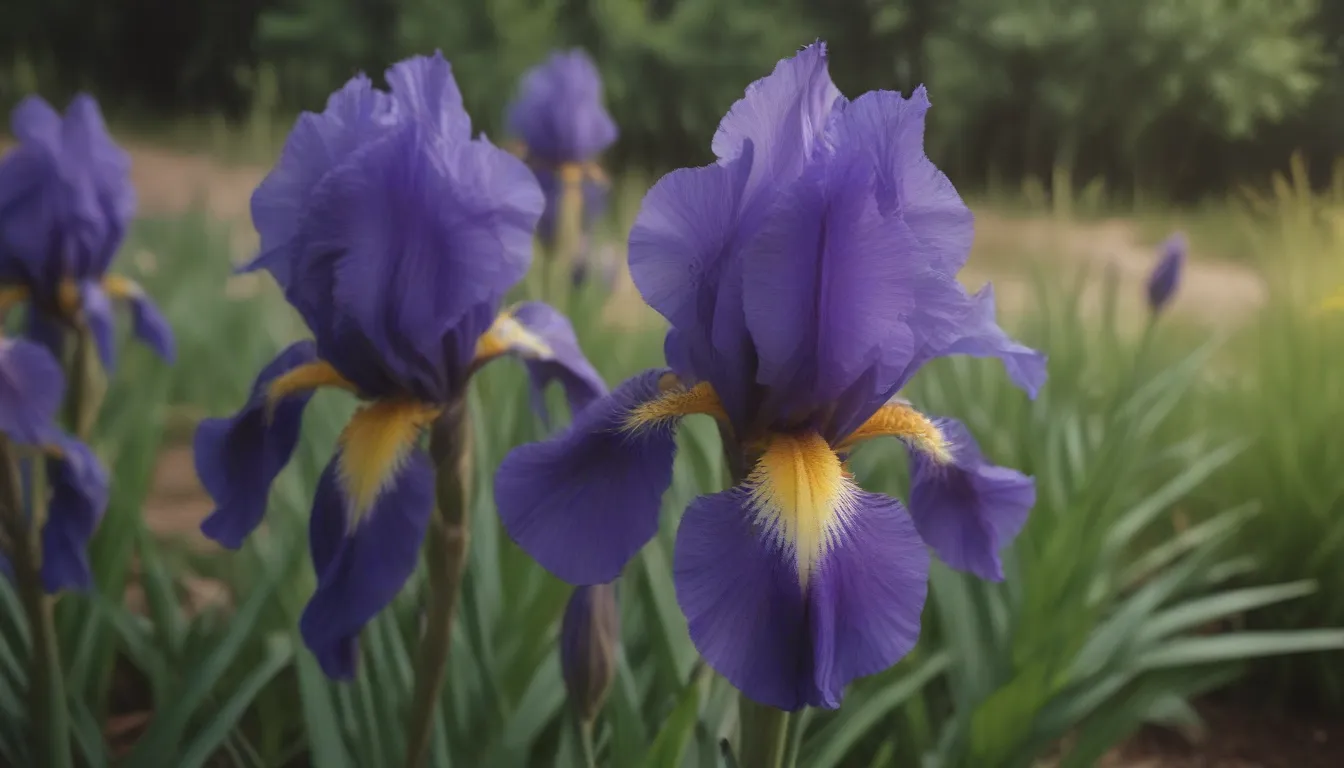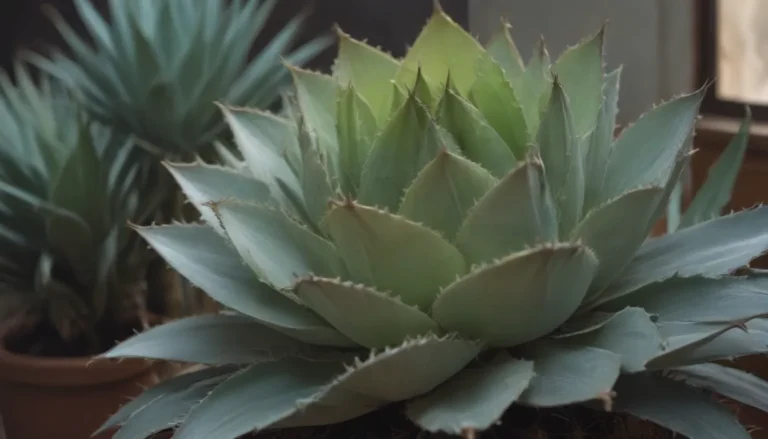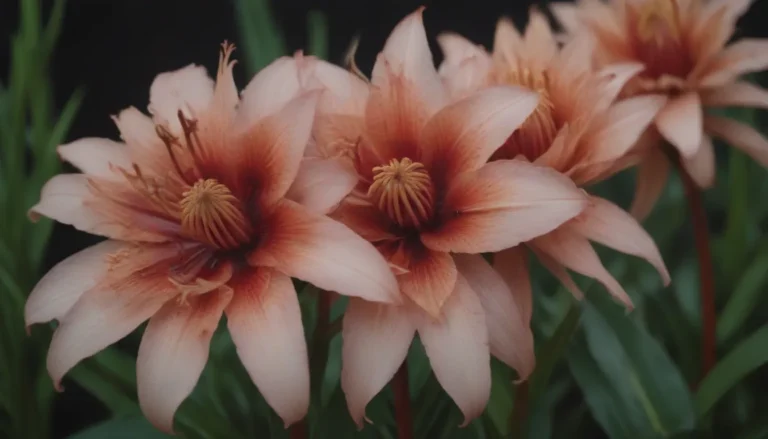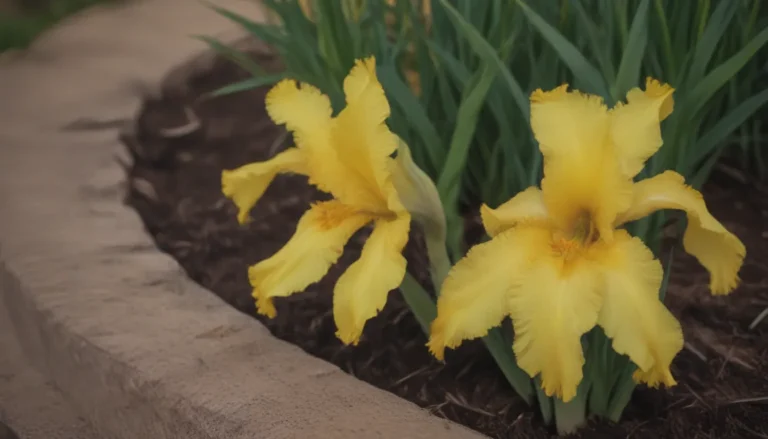Ultimate Guide: Growing and Caring for Siberian Iris

Are you looking to add a touch of elegance and grace to your garden? Siberian iris might just be the perfect choice for you. While they may not be as popular as their bearded iris counterparts, Siberian irises offer a range of unique advantages that make them a standout choice for any garden. In this in-depth guide, we will explore everything you need to know about growing and caring for Siberian iris plants. From planting and maintenance tips to dealing with common issues, we’ve got you covered. So let’s dive in and discover the beauty and simplicity of Siberian iris cultivation.
What Makes Siberian Iris Special?
Siberian iris, scientifically known as Iris sibirica, belongs to the Iris genus and boasts a variety of unique features that set it apart from other iris varieties. Here are some reasons why Siberian iris is worth considering for your garden:
- Attractive foliage: Siberian iris sports strappy, sword-like foliage that remains visually appealing long after the flowers have faded. The textured leaves resemble that of an ornamental grass, adding interest to your garden.
- Cold-hardy nature: Unlike some iris varieties, Siberian iris is highly cold-hardy and can thrive in gardens as far north as USDA Zone 3. This makes it an excellent choice for gardeners in cooler climates.
- Resistance to pests and diseases: Siberian iris is known for its resilience against borer worms and rot, common issues that plague other iris varieties. This means less maintenance and more enjoyment for you.
- Drought-tolerant: Siberian iris is more forgiving when it comes to water requirements, making it a great choice for gardeners in dry regions. With proper care, these plants can thrive even in challenging conditions.
While Siberian iris may not have the large, showy flowers of some iris varieties, its easy-to-grow nature and unique characteristics make it a valuable addition to any garden.
Siberian Iris Care Tips
Light
- In cooler climates, Siberian iris prefers full sun for optimal flowering. However, it can tolerate partial shade.
- In warmer regions, partial shade is recommended, especially if regular watering may be a challenge. Avoid excessive shade, as it can reduce flower production.
Soil
- Siberian iris thrives in moist but well-draining soil. Avoid waterlogged conditions, as this can lead to root rot.
- A slightly acidic to neutral soil pH (6.5 to 7.0) is ideal for Siberian iris. Consider using an acidifying fertilizer in alkaline soils.
Water
- Consistent moisture is crucial for Siberian iris, especially in the spring and early summer. Water deeply but avoid saturating the soil.
- During the summer, reduce watering frequency to prevent root rot. Approximately one inch of water per week is sufficient.
Temperature and Humidity
- Siberian iris is hardy in USDA Zones 3 to 8 and borderline in Zone 9. Consult local experts for suitable varieties in warmer climates.
- Mulching helps retain soil moisture and prevent frost heaving in winter. Maintain optimal soil moisture levels for healthy growth.
Fertilizer
- Use a balanced 10-10-10 fertilizer in early spring and after flowering to support plant growth. Follow label instructions for application rates.
- Consider using compost as an alternative to chemical fertilizers, especially in organic gardening practices.
By following these care tips, you can ensure that your Siberian iris plants thrive and reward you with beautiful blooms season after season.
Types of Siberian Iris Cultivars
While Siberian iris is typically labeled as Iris sibirica, many cultivars are complex hybrids with diverse parentage. Here are some popular Siberian iris cultivars known for their unique attributes:
- ‘Caesar’s Brother’
- ‘Butter and Sugar’
- ‘Blueberry Fair’
- ‘Charming Billy’
- ‘Contrast in Styles’
- ‘Cape Cod Boys’
- ‘Snow Queen’
- ‘Halcyon Seas’
- ‘Pink Haze’
- ‘Sky Wings’
- ‘Eric the Red’
- ‘Orville Fay’
- ‘Super Ego’
Each cultivar offers a distinct color palette and growth habit, allowing you to create a diverse and vibrant garden display with Siberian iris.
Propagation and Division
Like most iris plants, Siberian iris can be propagated through division of rhizomatous roots. Division is essential for maintaining plant health and preventing overcrowding. Here’s how to divide Siberian iris effectively:
- Divide when the center of the plant clump becomes woody and unproductive.
- Look for declining foliage and barren areas in the center as signs of overcrowding.
- Perform division in the fall for warm climates and in the spring for cooler regions.
By dividing your Siberian iris plants regularly, you can ensure that they remain vigorous and continue to produce abundant flowers.
Growing Siberian Iris From Seeds
While Siberian iris seeds can be harvested from mature plants, most garden varieties are hybrids that do not grow true from seed. Therefore, propagation through seed is not recommended for maintaining consistent plant characteristics.
Potting and Overwintering
Although Siberian iris is traditionally grown in the ground, it can thrive in container gardens with proper care. Here are some tips for potting and overwintering Siberian iris:
- Use a large, well-draining container filled with peat-based potting mix.
- Water and fertilize regularly to support growth in pots.
- Overwinter potted plants in a sheltered location, avoiding indoor environments to allow for a winter chill period.
With the right container and maintenance routine, you can enjoy the beauty of Siberian iris in a confined space and even create stunning mixed container displays.
Common Pests and Diseases
Siberian iris is relatively resistant to common iris issues such as borer worms and bacterial rot. However, avoid waterlogging the soil to prevent root rot. Keep an eye out for slugs, which can occasionally damage the plants.
Troubleshooting Blooming Issues
If your Siberian iris plants fail to bloom, consider the following factors:
- Ensure plants are mature and well-established before expecting blooms.
- Provide sufficient winter chill in cooler climates to promote flowering.
- Divide overcrowded plants to encourage blooming.
- Check soil pH and adjust if it is too high, as this can impact flowering.
By addressing these potential issues, you can help your Siberian iris plants bloom beautifully year after year.
Conclusion
Siberian iris is a versatile and resilient plant that can bring beauty and elegance to any garden. With its unique characteristics and easy-to-care-for nature, it is a valuable addition for both novice and experienced gardeners. By following the tips and guidelines outlined in this comprehensive guide, you can successfully grow and care for Siberian iris plants in your own outdoor space. Whether you’re looking to brighten up a shady corner or create a colorful border display, Siberian iris is sure to impress with its enduring beauty and charm. Give Siberian iris a try in your garden and enjoy the rewards of its graceful presence year after year.
Remember to always reference reputable sources and consult with local experts for specific advice tailored to your region’s conditions. Happy gardening with Siberian iris! 🌸





